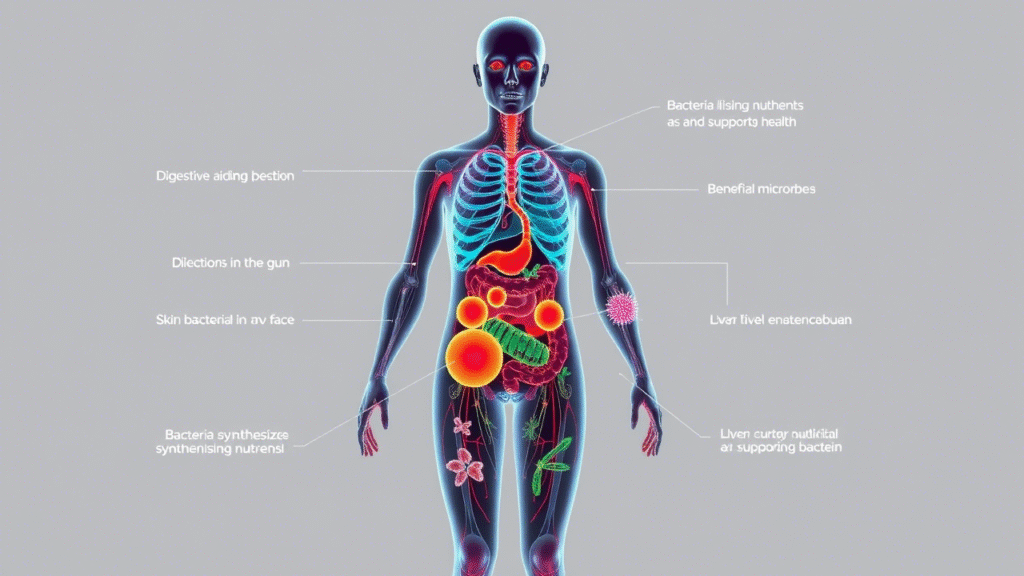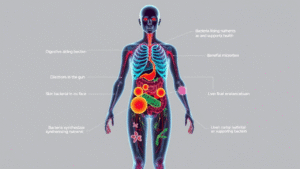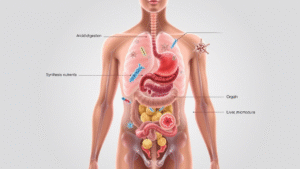Terrain Theory vs Germ Theory: Revisiting the Forgotten Foundations of Health
Introduction: Two Paradigms, One Battle for Truth
Modern medicine operates largely on the premise that microbes cause disease. This is the essence of Germ Theory, popularized in the 19th century by Louis Pasteur. But there exists an alternative view that once stood as the cornerstone of medical thought: Terrain Theory. Advocated by contemporaries like Claude Bernard and Antoine Béchamp, Terrain Theory posits that the internal condition of the body—its “terrain”—determines whether disease takes hold.
This article explores the historical and political maneuvering that led to Germ Theory’s dominance, examines the mechanisms and importance of terrain integrity, and reclaims the scientific value of biological context over microbial blame.
Historical Context: From Béchamp to Rockefeller Medicine
In the 1800s, Claude Bernard famously stated, “The microbe is nothing; the terrain is everything.” His colleague, Antoine Béchamp, conducted extensive experiments showing that microbes could morph and adapt based on the body’s internal environment. He introduced the idea of microzymas—elementary living entities that could change form depending on the terrain.
Louis Pasteur, although a chemist and not a physician, advanced the Germ Theory by promoting the notion that specific diseases are caused by specific pathogens. Historical records and correspondences reveal that even Pasteur admitted on his deathbed, “Bernard was right; the microbe is nothing, the terrain is everything.”
However, Pasteur’s ideas gained traction not because of superior evidence, but due to his social and political ties. With industrialists like Rockefeller and Carnegie funding medical schools and scientific societies in the early 20th century, allopathic, pharmaceutical-based medicine was aggressively institutionalized. Universities and journals funded by these empires favored germ-focused models that enabled profitable drug development, systematically marginalizing natural and terrain-based approaches.
Why the Terrain Matters: Internal Ecosystem as Immune Intelligence
The terrain encompasses all internal variables that affect health—pH balance, mineral status, emotional state, toxicity load, nutritional sufficiency, microbiome diversity, and more. A healthy terrain provides a hostile environment for pathogens and supports immune regulation.
Dysbiosis, acidosis, chronic stress, and toxic overload degrade this ecosystem, making the body susceptible to infections. In this model, microbes are opportunistic responders to decay—not primary aggressors.
Bacteria: Not Always the Arsonist
The presence of bacteria in infections is often interpreted as causation. But as with firefighters found at the scene of a fire, their presence does not imply guilt. Bacteria frequently play clean-up roles, decomposing dead tissue or metabolizing toxins.
In truth, bacteria are integral to the body’s regenerative processes. When tissues are damaged or infection is present, the body’s immune system—alongside resident and transient microbes—engages in a complex repair protocol. Bacteria help to break down necrotic material and modulate inflammation. As immune cells (macrophages, neutrophils, and killer T cells) reduce bacterial load and neutralize threats, the body initiates tissue regeneration. This collaborative dance between microbes and immune components is essential to healing and recovery.
The human body is, in fact, mostly microbial. Bacterial cells outnumber human cells by an estimated ratio of 1.3:1. These symbiotic bacteria—our microbiome—are not intruders, but essential partners in digestion, nutrient synthesis, detoxification, and immune modulation. They help sustain life itself.
However, in severely compromised terrain conditions, certain aggressive strains can multiply out of control and contribute to acute illness. Both views can coexist: terrain degradation invites opportunistic overgrowth, and in rare cases, pathogen virulence becomes significant.
Bacteria Sustain Human Life: Symbiosis Across All Biological Levels
Human life is inseparable from the bacteria that inhabit every part of the body. From mouth to rectum, skin to lungs, mucous membranes to organ linings, beneficial bacteria coexist with human cells in mutualistic harmony. In the oral cavity, bacteria begin the digestive process by breaking down carbohydrates. In the stomach and intestines, bacterial colonies facilitate digestion, synthesize essential vitamins (like B12 and K), and aid mineral absorption.
On the skin, bacteria form a protective biofilm that defends against pathogenic invaders. In the respiratory and genitourinary tracts, specific bacterial species regulate pH and immune responses. Even within cells, mitochondria—once independent bacteria—evolved into energy-producing organelles that power life itself.
This symbiotic relationship is dynamic: the body shapes the microbiome, and the microbiome shapes the body. When in balance, these organisms enhance immunity, modulate inflammation, produce neurotransmitters, and regulate mood and cognition. Disruption of this synergy, through antibiotics, processed diets, or toxic exposure, can destabilize health and open the door to chronic disease.
Pleomorphism: The Forgotten Flexibility of Microbes
Mainstream microbiology relies on the idea of fixed, identifiable species. Yet early researchers documented pleomorphism—the capacity of microbes to shift from one form to another (e.g., from viral-like particles to bacterial shapes) depending on environmental stimuli. This dynamic understanding aligns with terrain theory and implies that what we classify as pathogens may simply be different expressions of the same base organism reacting to internal conditions.
Conclusion: Rebalancing the Paradigm
Germ Theory led to important public health advances in sanitation and acute care. But its dominance has obscured the systemic wisdom of Terrain Theory. By restoring attention to the internal environment—detoxification, immune support, emotional balance, and microbial synergy—we can shift from disease management to true healing.
This is not a call to reject Germ Theory, but to complete it. A strong terrain repels pathogens. A weak one invites them.
References
- Engelbrecht, T., & Könlein, C. (2007). Virus Mania: How the Medical Industry Continually Invents Epidemics, Making Billion-Dollar Profits at Our Expense.
- Lanka, S. (2020). No virus has ever been isolated according to Koch’s postulates. Wissenschafftplus.
- Béchamp, A. (1883). The Blood and its Third Anatomical Element.
- Bernard, C. (1878). Lectures on the Phenomena of Life Common to Animals and Plants.
- E. Douglas Hume (1923). Béchamp or Pasteur? A Lost Chapter in the History of Biology.
- G. E. Griffin (1974). World Without Cancer: The Story of Vitamin B17 (Rockefeller medicine chapter).
- F. Pearce (2012). The Story of the Human Body: Evolution, Health, and Disease.
- A. Cowan (2021). “Understanding Terrain Theory” in The Holistic Journal of Integrative Health.
Ian Kain,
Wellness Thrive Designer
+52 958 115 2683, WhatsApp
+1 604 710 7939, WhatsApp



